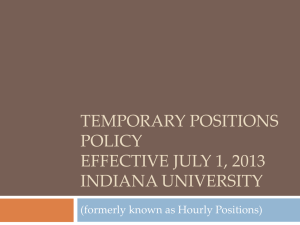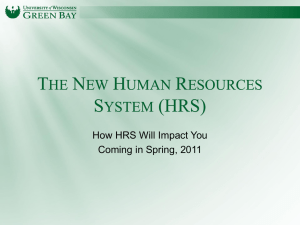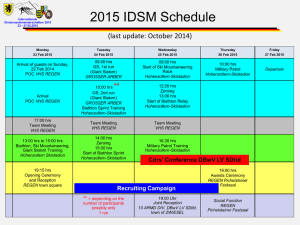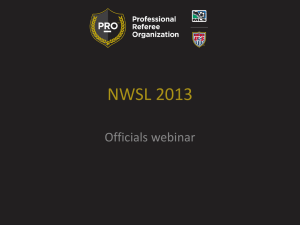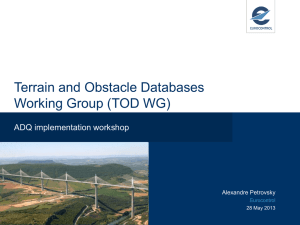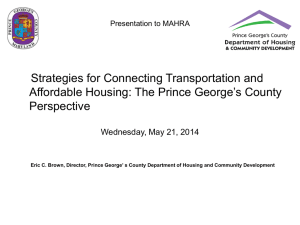Dilip Samajpati, Consultant, CESC
advertisement
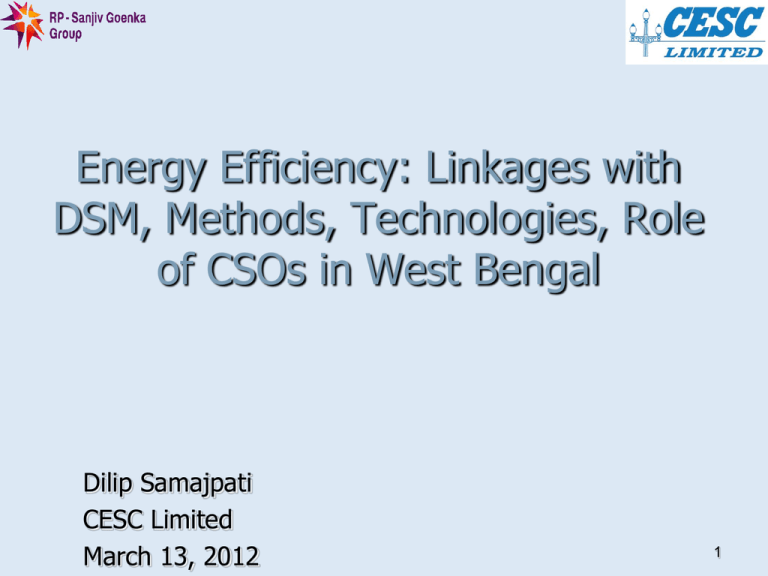
Energy Efficiency: Linkages with DSM, Methods, Technologies, Role of CSOs in West Bengal Dilip Samajpati CESC Limited March 13, 2012 1 Demand Side Management During 24 hours in a day, the demand for power changes over various time periods. It usually reaches the peak in the evenings when the lighting load is added to other loads. Demand Side Management (DSM) is a process to manage this variation in demand by planning and monitoring the pattern of electricity usage by the consumers. The simplest way of managing peak demand in the evenings is to control the use of high consumption electrical equipment (e.g. Air Conditioner, Geyser and other heating appliances, Pumps etc wherever possible. 2 DSM is the modification of consumer demand for energy through various methods such as financial incentives and education. General perception, it is an activity beyond meters where a distribution company has very little or no control. 3 TOD Tariff Power Factor Rebate / Surcharge Load Factor Rebate / Surcharge Less tariff for energy efficient equipment (Street Lighting with LED – 46 P less) 4 Direction to create awareness on TOD tariff Direction for installation of capacitor banks by the consumers Direction for installation of capacitor banks by the licensee Direction for energy audit Direction for undertaking load research 5 Encouraging TOD Encouraging Energy Audit at Consumers’ establishments Informing about installation of Capacitors for improvement of power factors Metering of Street lighting supplies Intense drive against theft of electricity 6 TOD Tariff CESC is actively encouraging TOD tariff in line with the directives of the Hon’ble WBERC. TOD tariff scheme is a tool for DSM as the scheme adopts higher prices during peak hours to discourage consumption. Concessional rates adopted during off-peak hours encourage consumption and smoothens the demand curve. Consumer may re-engineer their drawal from peak hours to off-peak hours to avail of the benefit of overall reduction in their electricity bill. 7 TOD for Industrial Consumers As per Tariff Order of 2010 – 2011 Period Time Zone Energy Charge (Paise/kWh) Normal 0600 hrs. to 1700 hrs. 521 Peak 1700 hrs to 2300 hrs. 782 Off-peak 2300 hrs. to 0600 hrs. 359 8 TOD for Commercial Consumers As per Tariff Order of 2010 – 2011 Period Time Zone Energy Charge (Paise / kWh) Normal 0600 hrs. to 1700 hrs. 540 Peak 1700 hrs to 2300 hrs. 594 Off-peak 2300 hrs. to 0600 hrs. 502 9 Load research is the study of how consumers and groups of consumers use electricity Involves measurement and study of the characteristics of electric loads of the consumers. Helps understanding and predicting how customer loads behave Required for DSM interventions 10 Lighting Load 300-350 MW Municipalities : 100 MW Street Light : 50 MW Domestic & Commercial Load : 300 MW Pumping Stations Drainage P.S. Utilities AC and Fan load – Domestic : 450-500 MW Power factor improvement 11 Bureau of Energy Efficiency The mission of Bureau of Energy Efficiency (BEE) is to institutionalize energy efficiency services, enable delivery mechanisms in the country and provide leadership to the key players involved in the energy conservation movement. The primary goal of the Bureau is to reduce the energy intensity in the economy of the country. 12 Electrical Rating for Refrigerator (250 Litres Frost Free) Star Rating Approx. Maximum Annual Energy Consumption Per Unit Charge in Rs. (approx.) Total Cost per year in Rs. Total Saving (w.r.t No Star) Every Year in Rs. No Star 1100 4.00 4400 0 1 (One) 977 4.00 3908 492 2 (Two) 782 4.00 3128 1272 3 (Three) 626 4.00 2504 1896 4 (Four) 501 4.00 2004 2396 5 (Five) 400 4.00 1600 2800 13 Electrical Rating for Tube Lights BEE STAR RATING PLAN STAR RATING * ** *** **** ***** Lumens per Watt at 100 hrs of use <61 >=61 & <67 >=67 & <86 >=86 & <92 >=92 Lumens per Watt at 2000 hrs of use <52 >=52 & <57 >=57 & <77 >=77 & <83 >=83 Lumens per Watt at 3500 hrs of use <49 >=49 & <54 >=54 & <73 >=73 & 78 >=78 14 Electrical Rating for Air - Conditioner Max. Min. Input Power Unit Consumed /Day in KWh (app.) Charge / Unit in Rs. (app.) Total Expend iture in Rs. Total Saving (without W.R.T. star) per year in Rs. Cooling Capacity (in Watt) Electricity Efficiency Ration (EER) Without Star 5200 2.20 2364 18.91 4.00 2269 0 * 5200 2.30 2261 18.09 4.00 2170 987 ** 5200 2.50 2080 16.64 4.00 1997 2723 *** 5200 2.70 1926 15.41 4.00 1849 4202 **** 5200 2.90 1793 14.34 4.00 1721 5477 ***** 5200 3.10 1677 13.42 4.00 1610 6588 Star Rating 15 Using Energy Efficiently Switching off electrical appliances when not required will reduce consumption. Use tube lights or energy saving lamps, such as CFL (Compact Fluorescent Lamp). This is applicable for A.C. supplies only. Use of electronic chokes with tube lights and electronic regulators with ceiling fans reduces consumption of electricity. Frequent opening of refrigerator door should be avoided. Keeping TV, Computer etc. on stand-by mode should be avoided because it consumes power in that mode also. 16 Using Energy Efficiently - contd. Clean the lamps, bulbs and its reflectors regularly. Use more sunlight. By doing so, you can avoid using electricity to illuminate your home or office during the day. Use white or light colours for the walls, ceilings, curtains, drapes and furniture as they help retain more light within the building and therefore, further reduce the cost of lighting. Use domestic appliances which standards. conform to ISI 17 Using Energy Efficiently - contd. Iron your clothes and linen at one go. Do not keep the hot iron upright for long. Before putting anything in the refrigerator, allow it to cool to room temperature and stack food items inside the refrigerator in such a way so as to allow adequate air circulation. Clean the air filter of the air-conditioner regularly. It increases compressor efficiency. 18 Thank You 19


